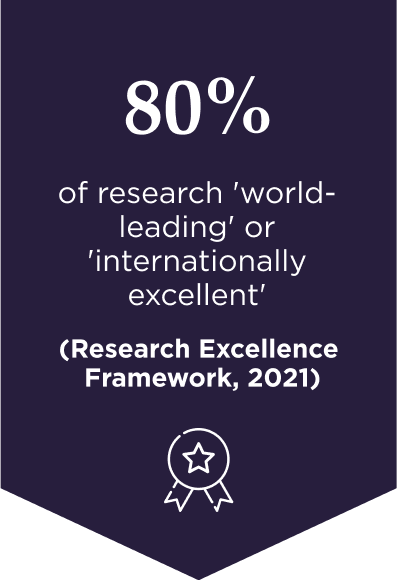Virtual reality’s impact on human perception and the world
Posted on: November 24, 2023by Ben Nancholas

In the ever-evolving landscape of technological advancements, virtual reality is a groundbreaking innovation. Virtual reality, or VR, blurs the lines between the real world and the virtual environment:
“Unlike other forms of media like movies and video games, virtual reality uses wearable hardware to fully immerse the user in the experience,” explains Shopify in a recent article about the importance of VR. “Virtual reality isn’t just for gamers—but it may have game-changing applications across entertainment, marketing, remote collaboration, training, and education.”
Furthermore, the virtual reality market is predicted to grow from US$4.2 billion USD revenue in 2022 to US$7 billion in 2023 – with further growth over the next decade.
The rise of virtual reality technology
Virtual reality technology has come a long way since it was first conceptualised. According to the UK’s Virtual Reality Society, modern ideas about VR can be traced back almost 200 years to the stereoscopes of the 1830s, and later to science fiction in the 1930s.
Jumping ahead to the head-mounted displays (HMDs) people often associate with virtual reality – such as the Oculus Rift and HTC Vive – these actually date back to the 1950s, when the Telesphere Mask HMD was invented.
Today, the use of VR blends everything from neuroscience principles to mechanical sensors and trackers. Advanced VR systems and interfaces can transport users to computer-generated virtual worlds, revolutionising the way they experience digital content and immersing them entirely in the experience using visual information and cues, auditory stimuli, and haptic feedback.
The influence of virtual reality on human perception
Human perception is the result of sensory inputs and cognitive processes – and VR technology can have a profound impact on this result by introducing stimuli that challenge people’s sensory systems.
The visual system, in particular, is highly susceptible to the manipulations of VR environments, and users typically rely on their eyes to navigate and interact within these immersive virtual environments. Creating realistic 3D environments that can be explored in real-time is therefore a critical human perception consideration in the development of virtual reality technologies.
However, audio and haptic feedback are also essential, with spatial audio “used to simulate realistic soundscapes, which can help users to orient themselves within the virtual environment and locate objects or other users”, and haptic feedback creating tactile sensations – such as vibrations – that simulate the sense of touch with virtual objects.
While VR environments often prioritise visual and auditory modalities, incorporating other senses – such as touch and even smell – can create a more holistic and immersive experience, and enhance the overall perception of the virtual world.
Applications of virtual reality technology
Research
Researchers are increasingly using immersive virtual environments as a quantitative and qualitative research tool for studying human reactions and behaviours. These are particularly effective for creating controlled experiments in scenarios ethically or practically challenging in the real world. For instance, researchers can simulate emergency situations to predict how people might respond to stressors in the real world – an area of psychology known as ecological validity:
“VR can elicit natural behaviors from participants due to the realism that is created by the simulated environment,” explains Psychology Today in its article ‘5 Ways Virtual Reality Can Help Us Understand Human Behavior’. “The VR environment can feel real, despite computer-generated graphics, because VR can mimic perceptual and psychological elements of the real world.”
Entertainment
Some of the most obvious examples of VR tech can be found in robotics and gaming, and recent research suggests this isn’t likely to change any time soon:
“The gaming industry accounts for the largest share of the VR market, with an estimated 70% of VR headset sales going to gamers,” says LinkedIn. “The growth of the VR gaming industry is expected to be fueled by the increasing adoption of VR devices, the development of new games, and the integration of VR technology into existing games.”
Healthcare
Virtual reality can be used to support healthcare services in a variety of ways. For example, immersive VR experiences and augmented reality technology can be used to treat phobias by exposing patients to controlled virtual environments that help desensitise them to triggers. Another potential application is in healthcare consultations, with a recent paper from the Institute of Electrical and Electronics Engineers (IEEE) highlighting the use of virtual reality to allow GPs, physicians, and specialists to deliver virtual consultations.
Education
Virtual reality can transform educational experiences by transporting learners to historical events, distant planets, or even the microscopic world of cells. This experiential learning methodology can foster deeper understanding – and enjoyment – of the subject matter.
Current challenges in virtual reality
Visual perception
It’s clear that immersive virtual reality relies on the wide field of view provided by virtual reality headsets. This expansive view mimics people’s natural vision and enhances their sense of presence within the virtual world. However, even slight discrepancies in field of view between the virtual and real world can lead to perceptual inconsistencies. And as a recent article from Curvature Games points out, even the latest in VR technology can’t match the human eye:
“The human field of view is about 220° and the human eyes would need a resolution with ~116,000,000 pixels while Rift or Vive offer only 2,592,000 pixels.”
Virtual reality sickness
The visual cues presented in VR environments can sometimes deceive the brain. The human visual system relies on cues such as depth perception to gauge distance and navigate through real-life scenarios. In virtual reality, however, these cues are artificially generated, which can lead to instances where users might experience motion sickness or a disconnect between their perceptual experience and their bodily sensations. This is commonly referred to as virtual reality sickness. Symptoms typically include nausea and dizziness, and it’s more likely to occur in cases of latency, which is the term used for any delay between a user’s action and the corresponding reaction in the virtual environment.
Help shape the future of virtual reality
Develop experience in the science behind virtual reality – including programming and user experience design – the 100% online MSc Computer Science at Keele University. This flexible, part-time programme has been designed for ambitious individuals who may not have studied computer science previously, as well as computer science professionals who want an academic qualification to accelerate their career progression in information technology.
You’ll develop and extend the practical skills you need for designing, building, deploying, and evaluating software and computer applications in a variety of contexts. You will also learn web languages including Python, Java, and XML, work with mobile apps, and learn to develop modern software systems and applications.



